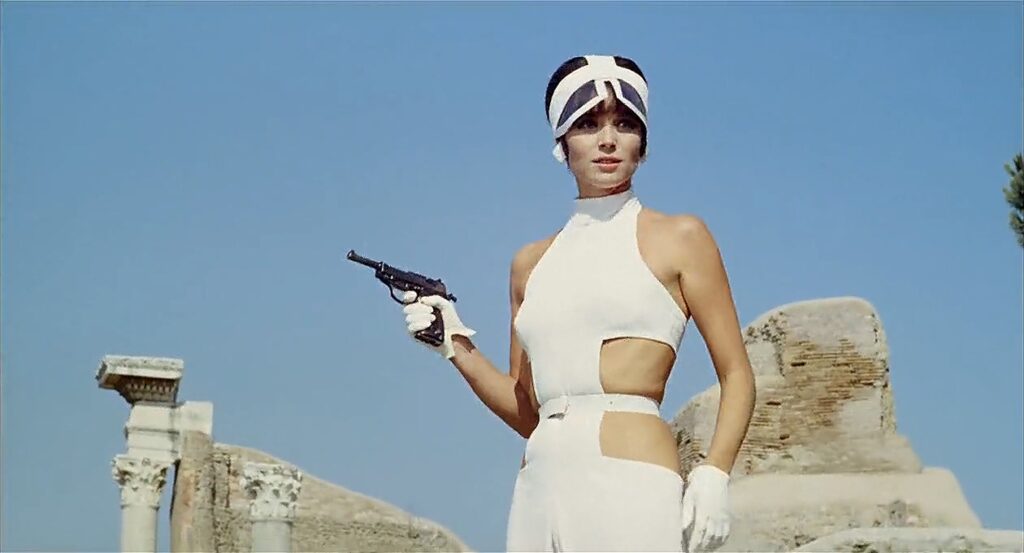
In the twenty-first century war and crime have been erased from society by the globally instituted “big hunt”. Mankind’s primitive, violent impulses are given expression in a game that is coordinated by computers. For the prize of one million dollars contestants will hunt and be hunted a total of ten times. Corporate endorsements come to those who survive beyond five hunts though very few individuals make it to ten and win the cash prize. Caroline Meredith (Ursula Andress), backed by Ming Tea, is on her tenth and final hunt and Marcello Polletti (Marcello Mastroianni) is to be her final victim.
La decima vittima (1965) adapts Robert Sheckley’s novel as a thoroughly modernist exploration of the Cold War industrial machine. Elio Petri, the director and co-writer of La decima vittima, takes a particular interest in how capitalist industry collaborates with the concept of “the big hunt”; drawing parallels between La decima vittima and corporate sponsorship of athletes and the economical systemization of violence as a means of financial gain. The manner in which the “hunts” are publicized by the media in La decima vittima reflects the reportage of the Vietnam War and other Cold War era atrocities.
La decima vittima attempts to trade in the spectacle of violence in the name of an anti-violence and anti-capitalist message. While this messaging is somewhat lost or diminished within the fashionably fatalistic romantic narrative of Caroline and Marcello’s “hunt”, the precision with which Petri scrutinizes big business’ complicity in the culture of violence remains potent. A pre-cursor to Logan’s Run (1976), La decima vittima shares the same fear that it is through capitalism that fascism will return to dominate Western culture in the future.
Even though the political commentary of La decima vittima may be muddied at times the film remains compulsively watchable for its eye popping modernist set pieces and fashions. The iconic Andress and Mastroianni have never looked more beautiful than they do in La decima vittima. As was the case with many European science-fiction films made during the sixties and seventies, La decima vittima was shot in and around the modernist structures of a major city (in this case Rome) to evoke a sense of the future. The apartment that the Mastroianni character shares with Elsa Martinelli (who always looks breathtakingly cool) is one of the highlights of the mise en scène in La decima vittima.
Upon its release La decima vittima became an instant favorite, garnering a kind of cult following that still persists to this day. Naturally critics compared La decima vittima to Jean-Luc Godard’s film Alphaville (1965) since both films share a distinctly modernist style and dabble in the science-fiction genre. Although La decima vittima was more popular with audiences at the time, Alphaville has become a part of the critical canon as a New Wave classic.
